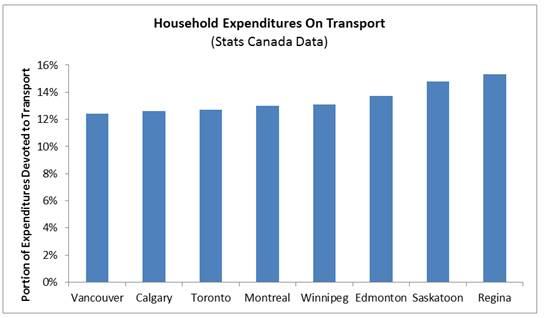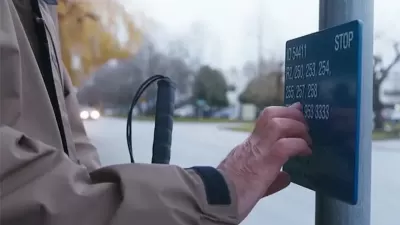Planners can do a better job communicating the benefits of high quality public transit and transit-oriented development. We can learn from marketing professionals—it's time to channel Don Draper.

As Brent Toderian describes in his recent blog post, "Public Transit Turning Point for Vancouver," the region's voters are being asked whether or not they support a sales tax increase to fund urban transportation improvements. The campaign began with considerable negativity and went downhill from there. Let's see what planners can learn from this experience so we can improve the quality of debate here and elsewhere.
This entire exercise is unfair because it singles out public transit for special scrutiny. How many transportation projects could withstand public funding approval? Would highway and bridge improvements? Off-street parking requirements in zoning codes? Ferry service subsidies? Only transit projects must run the gauntlet of a special vote, and few voters are prepared to make informed judgements about complex transportation plans. However, that's the challenge we face, so we must make the best of it.
In situations like this we need to apply marketing techniques; it’s time to channel Don Draper. People often misunderstand this concept. They assume that marketing consists simply of advertising, but that is actually only a small part of the marketing process. Effective marketing requires understanding people's needs and concerns, and how they respond to various options and messages. This requires good listening as well as speaking skills.
Early in Vancouver’s transit funding debate, critics took control of the narrative by claiming that TransLink, the regional transportation authority, is wasteful and poorly governed, citing examples of excessive executive pay and delays to major project such as the new Compass fare card. It's true that, like any large organization, some of TransLink's decisions seem inefficient, and there is certainly room for improvement. However, according to standard performance indicators such as operating costs per passenger-kilometer, farebox recovery and per capita transit ridership, TransLink's overall performance is good compared with its peers (see graphs below). Transit advocates failed to respond effectively to these criticisms, so the negative impression stuck; advocates have had to work hard to provide more accurate information.
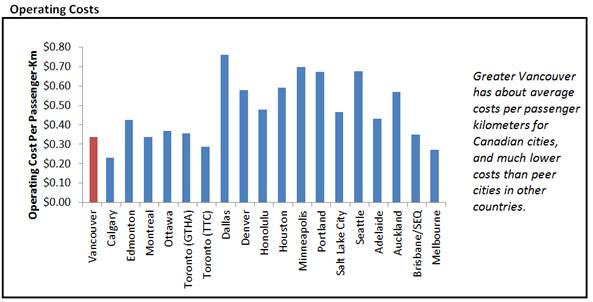
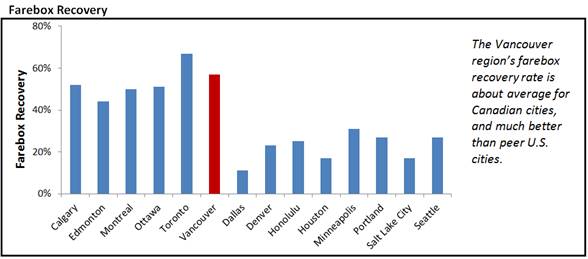
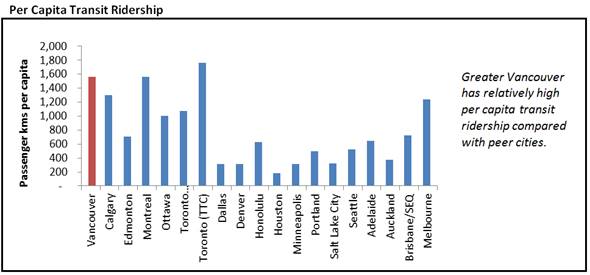
A lesson from this experience is that transit advocates must effectively respond to criticisms and refocus debates on the key issue, which is how to serve growing consumer demand for high quality transit and more transit-oriented development.
Fortunately, public transit and transit-oriented development provide many benefits, such as those listed in the following table. There is good research showing that residents of communities with high quality public transit tend to own fewer vehicles and drive significantly less than they would in more automobile dependent locations, and as a result, they tend to save on transportation costs, reduce road and parking facility costs, are less likely to die in traffic accidents, are healthier, and spend less total time delayed by traffic congestion or chauffeuring non-drivers. As a result, expenditures on high quality public transit can provide a high return on investment: each dollar spent provides several dollars in total savings and benefits.
Economic |
Social |
Environmental |
|
Household transportation cost savings. Road and parking infrastructure savings. Improved mobility and reduced traffic congestion. Supports local economic development. Reduced traffic accident costs. |
Improved mobility for non-drivers – helps achieve social equity objectives. Improved public fitness and health. Reduced chauffeuring burdens. |
Reduced land consumption – openspace preservation. Reduced impervious surface and stormwater management costs. Reduced air pollution and climate change emissions. |
Public transit provides significant, diverse benefits, including many benefits to people who do not currently use it but benefits from reduced traffic and parking congestion, traffic safety and reduced chauffeuring burdens.
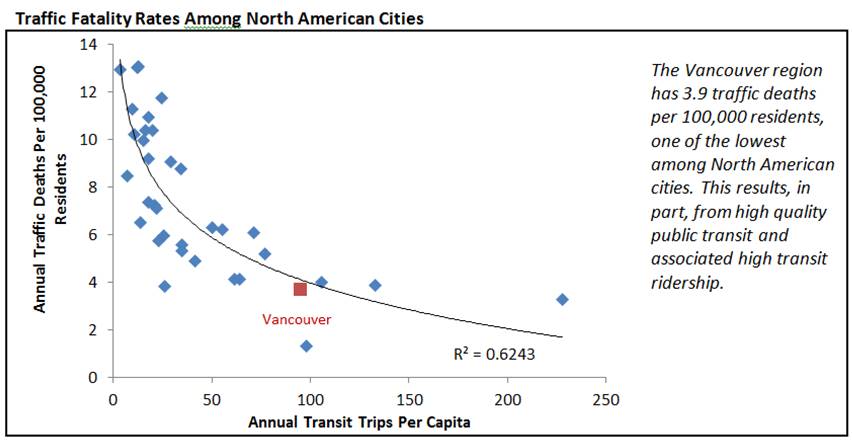
The Vancouver region has one of the lowest per capita traffic fatality rates among North American cities (3.9 deaths per 100,000 residents, see figure above) and the lowest portion of household expenditures devoted to transportation among major Canadian cities (see graph below).
These positive outcomes almost certainly result from the region's relatively low and declining automobile mode share (see graph below), which results from the region’s previous investments in walking and cycling facilities, and public transit services. You would think that information such as this would be highlighted by TransLink and its supporters, but I have not seen it mentioned. TransLink should do more to promote its great work!
Unfortunately, we are often poor at communicating public transit benefits in ways that resonate to diverse audiences; we have a terrific product but fail in marketing. Vancouver transit advocates focused on congestion and emission reduction benefits, and eventually produced a report estimating consumer savings, but it is a short technical document that does not describe how typical households can save from high quality public transit or compare actual household transport expenditures between multimodal and automobile-dependent neighborhoods. The Regional Investment Vision mentions that the additional revenue would reduce regional deaths by increasing physical fitness and reducing accidents, but provides no details, and this benefit is mentioned nowhere else in the promotional materials.
How can we do better? We need to:
- Understand the concerns and objectives of various residents.
- Provide credible evidence of how increased investments could achieve those objectives.
- Condense this technical information into easy-to-understand stories.
We need facts and stories that resonate with diverse audiences, including people who do not currently use public transit and seldom drive under urban-peak conditions and so are not directly affected by congestion. We need stories which illustrate how improving travel options and creating more transit-oriented communities can save households money, reduce chauffeuring burdens, improve safety and health, allow residents to "age in place" as they grow older, reduce costs to businesses and governments, and support economic development. We need evidence which shows how TransLink’s services benefit residents, and how the benefits increase with improved services.
Shout it from the rooftops: Vancouver is a great example of multi-modal planning.

Alabama: Trump Terminates Settlements for Black Communities Harmed By Raw Sewage
Trump deemed the landmark civil rights agreement “illegal DEI and environmental justice policy.”

Study: Maui’s Plan to Convert Vacation Rentals to Long-Term Housing Could Cause Nearly $1 Billion Economic Loss
The plan would reduce visitor accommodation by 25% resulting in 1,900 jobs lost.

Planetizen Federal Action Tracker
A weekly monitor of how Trump’s orders and actions are impacting planners and planning in America.

Wind Energy on the Rise Despite Federal Policy Reversal
The Trump administration is revoking federal support for renewable energy, but demand for new projects continues unabated.

Passengers Flock to Caltrain After Electrification
The new electric trains are running faster and more reliably, leading to strong ridership growth on the Bay Area rail system.

Texas Churches Rally Behind ‘Yes in God’s Back Yard’ Legislation
Religious leaders want the state to reduce zoning regulations to streamline leasing church-owned land to housing developers.
Urban Design for Planners 1: Software Tools
This six-course series explores essential urban design concepts using open source software and equips planners with the tools they need to participate fully in the urban design process.
Planning for Universal Design
Learn the tools for implementing Universal Design in planning regulations.
Caltrans
Smith Gee Studio
Institute for Housing and Urban Development Studies (IHS)
City of Grandview
Harvard GSD Executive Education
Toledo-Lucas County Plan Commissions
Salt Lake City
NYU Wagner Graduate School of Public Service


























